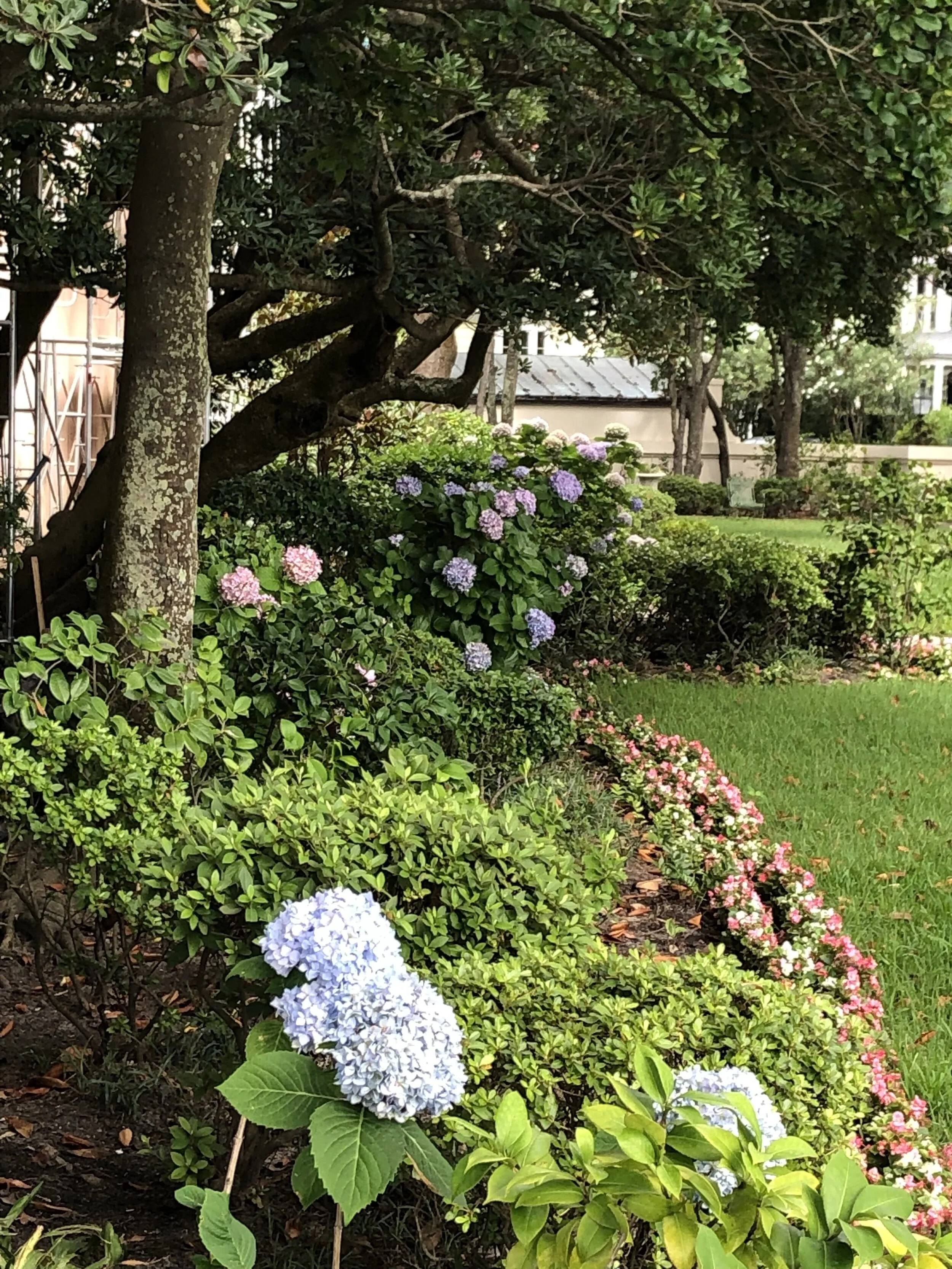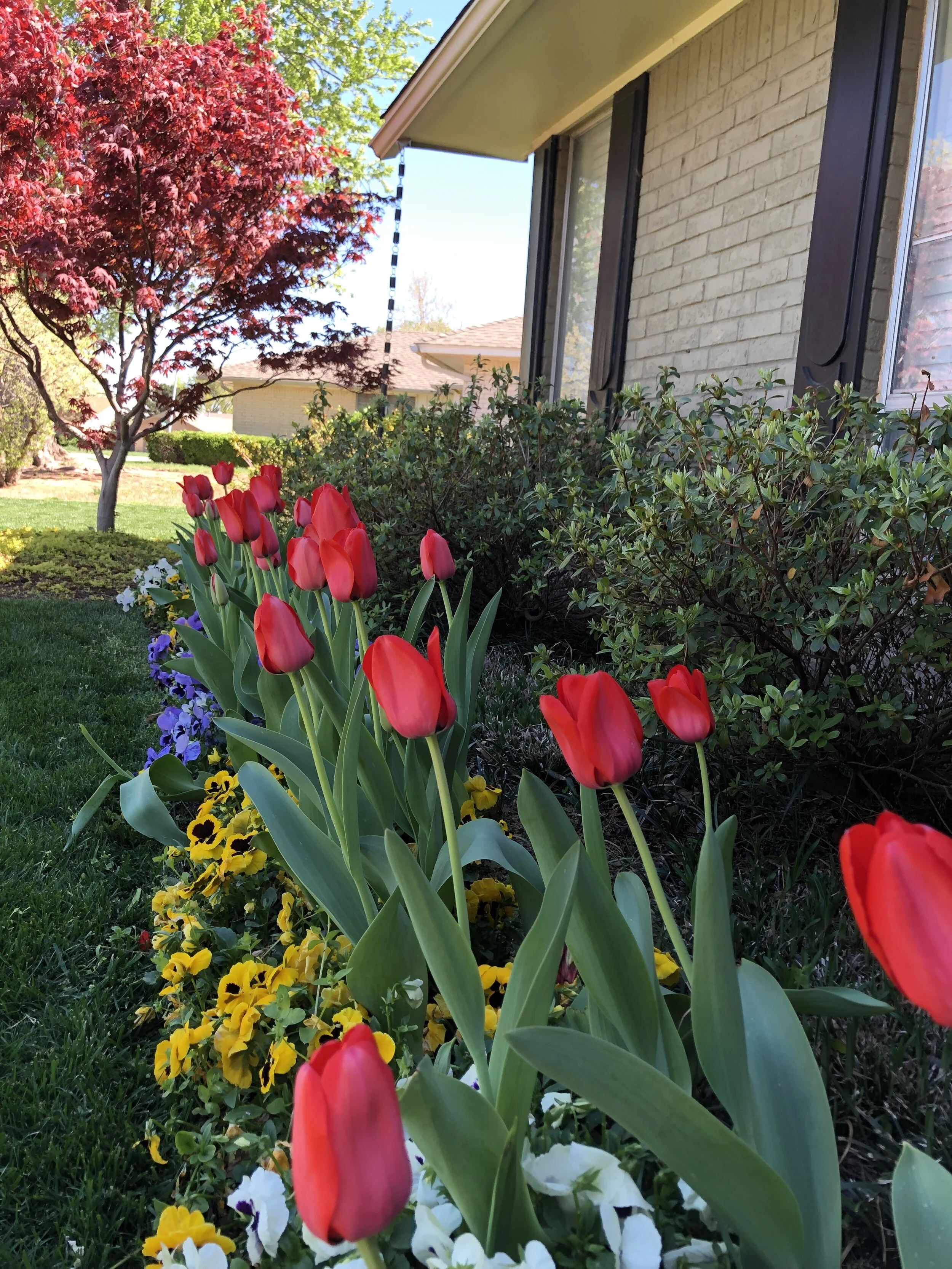Great Landscape Plantings Have 3 Levels
We interrupt the Siberian cold front with thoughts of colorful landscapes!
When you can’t be out enjoying landscapes, you can always dream of landscapes, right?
Let’s spend a few minutes talking about great landscape plantings this morning.
What makes the difference between an average landscape planting and a great landscape planting?
Great landscape plantings contain three levels: a front, a middle, and a back.
Let’s start with some basic design math:
Front – No more than 18” in height. Low ground covers, perennials, annual color and small plants.
Middle – Perennials, annual color and smaller shrubs with enough height to start creating levels. 18” to 3’ in height.
Back – Shrubs and small trees. 3’ or more in height.
Read the plant label and believe what it says about plant height and growing conditions. Remember plants perform their best if they are allowed to grow to their natural height and form. If you have only 4’ of height for your back level, don’t plant a shrub with a mature height of 10’ with the idea you will keep it pruned. Even if you are diligent with your maintenance, the plant will never look as good as it would if it could grow naturally.
Begonias, azaleas, hydrangeas used to create levels under live oaks in Charleston.
If your space is limited and you still want to gain height, a climbing vine or shrub against a wall or fence is a great solution. Also consider using a flowering tree, boxwood, or pyracantha in an espaliered form.
Walls and fences don’t count as the third level. To get the impact you need three levels in front of the object.
The levels don’t have to be in a continuous, linear run of all the same plant material. If you prefer, each level can contain a mixture of a few plants. Often the middle level works well with a few, specimen plants of interest, or groupings of perennials.
Annuals and bulbs used in front of azaleas to create levels.
A few ideas to get you started:
Large ornamental grasses in the back, flowering shrubs in the middle, with a ground cover boarder in the front.
Crape myrtle in the back, evergreen shrubs in the middle, and annual color in the front.
Evergreens for the back with a mix of perennials in the middle and ground covers in the front.
A specific shady area idea you may like is azalea in the back, hosta in the middle, and dwarf mondo in the front.
Groundcover, barberry and hydrangea used to create layers.
Dwarf Globe Blue Spruce used as a mid level shrub adds color and interest to a landscape.
Espaliering a plant, such as Pyracantha, on a wall or fence is a great way to create levels in small spaces.
A first level of bright seasonal color creates a welcoming environment to a front door.
Annuals, perennials, flowering shrubs and evergreens planted in levels to add interest.
When selecting plants for each level, don’t always go for flowering plants. Plants with interesting leaf shapes and colors can make the flowering plants look even better.
Need a low maintenance landscape option with three levels? Plant Pink Muhly Grass between groundcover and standard Juniper varieties. Little to no trimming will be required.
Larger plants, particularly when you have the room, are great for adding interest and will soften walls and fences. They also can be planted free standing to create a boarder or screen an unsightly view. The more space you have the bigger you can go with the back level.
Annuals planted in front of perennials to create levels.
Inpatients, Caladiums and Hostas create layers in front of Azalea and Hydrangeas in shady areas.
Plantings should have something of interest in every season. For high visibility areas and for great curb appeal, it is best if one level includes evergreens and another one annual color.
Always greet customers with flowers. Great front doors have a splash of annual color.
Annuals and bulbs used to create a warm welcome for guest.
A great resource for ideas and plant materials is Monrovia.com. Monrovia has been a leader in landscape plant material for over 90 years. I sure you will find their website a great resource. The content in this email is from Monrovia combined with our years of experience in the landscape industry.
We would enjoy hearing your ideas on great landscape designs and plants. Give us a call or respond with an email and let us know what is working well in your landscape.
Stay warm and keeping dreaming of days when you can be out in your landscape.
Lorne Hall
Hall | Stewart Lawn + Landscape
(405)367-3873
Grasses make a great middle level when creating landscape plantings.













